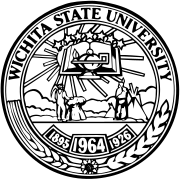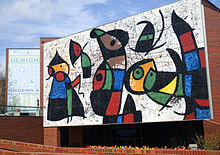
The University of Missouri–Kansas City is a public research university in Kansas City, Missouri. UMKC is part of the University of Missouri System and has a medical school. As of 2020, the university's enrollment exceeded 16,000 students. It is the largest university and third largest college in the Kansas City metropolitan area. It is classified among "R2: Doctoral Universities – High research activity".

Washington State University (WSU) is a public land-grant research university in Pullman, Washington. Founded in 1890, WSU is also one of the oldest land-grant universities in the American West. With an undergraduate enrollment of 24,278 and a total enrollment of 28,581, it is the second largest institution for higher education in Washington state behind the University of Washington. It is classified among "R1: Doctoral Universities – Very high research activity".
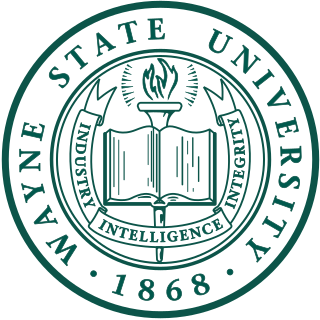
Wayne State University is a public research university in Detroit, Michigan. It is Michigan's third-largest university. Founded in 1868, Wayne State consists of 13 schools and colleges offering approximately 350 programs to nearly 24,000 graduate and undergraduate students. Wayne State University, along with the University of Michigan and Michigan State University, compose the University Research Corridor of Michigan. Wayne State is classified among "R1: Doctoral Universities – Very high research activity".

Truman State University is a public university in Kirksville, Missouri. It had 3,636 enrolled students in the fall of 2023 pursuing degrees in 55 undergraduate and twelve graduate programs.

Winona State University (WSU) is a public university in Winona, Minnesota. It was founded as First State Normal School of Minnesota in 1858 and is the oldest member of the Minnesota State Colleges and Universities System. It was the first normal school west of the Mississippi River.

Tennessee Technological University is a public research university in Cookeville, Tennessee. It was formerly known as Tennessee Polytechnic Institute, and before that as University of Dixie, the name under which it was founded as a private institution. Affiliated with the Tennessee Board of Regents, the university is governed by a board of trustees. It is classified among "R2: Doctoral Universities – High research activity".
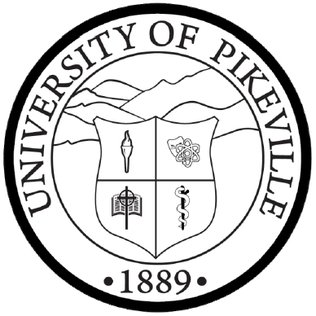
The University of Pikeville (UPIKE) is a private university affiliated with the Presbyterian Church (USA) and located in Pikeville, Kentucky. It was founded in 1889 by the Presbyterian Church and is located on a 25-acre (10 ha) campus on a hillside overlooking downtown Pikeville.
Charles Koch Arena is a 10,506-seat multi-purpose arena in Wichita, Kansas, United States. It is located on the southeast corner of 21st and Hillside on the campus of Wichita State University in northeast Wichita. The arena is home of the Wichita State Shockers men's basketball, women's basketball, and women's volleyball teams.

Wichita East High School, known locally as "East", is a public secondary school in Wichita, Kansas, United States. It is operated by Wichita USD 259 school district. The centrally located school's 44-acre (180,000 m2) campus and the building's Collegiate Gothic styling make it an urban landmark. The square footage of the East High campus today is 443,814. East's enrollment for the 2018–19 school year was 2,462, making it the largest high school in Kansas. The school offers the International Baccalaureate program, a magnet program that teaches students at a college level, and which attracts students from across the city. The campus is also home to WSU Tech, a division of Wichita State University which provides technical training and education.

Cessna Stadium is a stadium on the campus of Wichita State University in Wichita, Kansas, United States. It opened in 1946 and served as the home of the football team until the program was discontinued in 1986. It is currently home of the Wichita State Shockers track and field team. The Kansas Board of Regents approved demolition of the stadium in April 2020. Only the east stands were demolished. The rest of the stadium is supposed to be demolished after the 2024 track and field season.

Penn State Altoona is a commonwealth campus of The Pennsylvania State University located in Logan Township, Pennsylvania. It is one of four full-fledged four year institutions in the Commonwealth Campus network. The full-time student count was 2,577 in 2023.

Wichita State University Campus of Applied Sciences and Technology is a public community college in Wichita, Kansas, United States. It was known as the Wichita Area Technical College before its affiliation with Wichita State University. WSU Tech is accredited by the Higher Learning Commission, coordinated by the Kansas Board of Regents (KBOR), and governed by the Sedgwick County Technical Education and Training Authority Board (SCTETA). WSU Tech operates four different campuses throughout the metropolitan area of Wichita. Its main campus is the National Center for Aviation Training (NCAT).
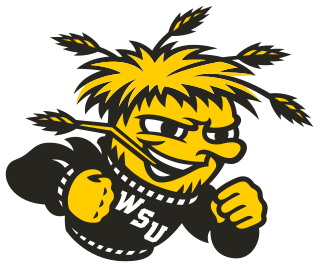
The Wichita State Shockers are the athletic teams that represent Wichita State University, located in Wichita, Kansas, in intercollegiate sports as a member of the NCAA Division I ranks, primarily competing in the American Athletic Conference since the 2017–18 academic year. The Shockers previously competed in the D-I Missouri Valley Conference (MVC) from 1945–46 to 2016–17; as an Independent from 1940–41 to 1944–45; in the Central Intercollegiate Athletic Conference (CIC) from 1923–24 to 1939–40; and in the Kansas Collegiate Athletic Conference (KIAC) of the National Association of Intercollegiate Athletics (NAIA) from 1902–03 to 1922–23. As of the 2023 conference realignment, it is one of two schools in The American to have never been a member of Conference USA, although it will become a single-sport member of that conference for bowling in 2024. They are also currently the only non-football-sponsoring institution that is a member of an FBS conference.
The Wichita State Shockers men's basketball team is the NCAA Division I college basketball program representing Wichita State University in Wichita, Kansas.
The Wichita State Shockers football team was the college football program of Wichita State University in Wichita, Kansas. The Shockers fielded a team from 1897 to 1986. They played their home games at Cessna Stadium and were members of the Missouri Valley Conference until the program was discontinued. The team was known as Fairmount from its first season in 1897 to 1925 and Wichita from 1926 through 1963.

Housing at Georgetown University consists of 13 residence halls at the main campus and a law center campus. Housing on Georgetown's main campus is divided between "halls," usually more traditional dormitories, and "villages", usually less traditional apartment complexes. In addition, Georgetown operates many townhouses in the Georgetown neighborhood, usually for second, third, and fourth-year students.

The main campus of the Georgia Institute of Technology occupies part of Midtown Atlanta, primarily bordered by 10th Street to the north, North Avenue to the south, and, with the exception of Tech Square, the Downtown Connector to the East, placing it well in sight of the Atlanta skyline. In 1996, the campus was the site of the athletes' village and a venue for a number of athletic events for the 1996 Summer Olympics. The construction of the Olympic Village, along with subsequent gentrification of the surrounding areas, significantly changed the campus.
Wichita, Kansas is home to several professional, amateur, and college sports teams.

Wichita State University Libraries are a research library system with holdings of more than 2 million volumes, 236 databases and more than 70,000 journal subscriptions. Located on the University's main campus in Wichita, Kansas University Libraries serve the approximately 15,000 enrolled students of Wichita State University (WSU) while also providing services to the surrounding community. University Libraries serves as a regional United States Federal Government Documents Depository, a State of Kansas Government Documents Depository, and is the State of Kansas only Patents and Trademarks Library. University Libraries Special Collections and University Archives contains numerous rare books and incunabula, historical manuscripts collections and maps, photographic archives documenting Kansas history, and hosts the Wichita Photo Archives.
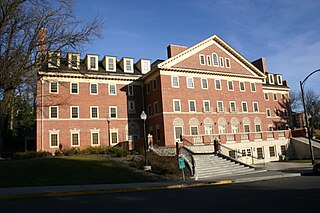
The Elmina White Honors Hall, also known as Honors Hall is a residence hall located on the main campus of Washington State University in Pullman, Washington. It was designed by Stanley Smith, the head of the architecture department at Washington State University (1924-1947), and was completed in 1928. It was later remodeled into student housing and faculty offices in 2001, costing $15.3 million. It is located in the northwest corner of Washington State University (WSU) in Pullman, Washington. Its original purpose was to house the Home Economics department as part of the College of Domestic Economy. Following the 2001 reconstruction, the four-story building, with a converted basement, was transformed into three floors of residential suites with classrooms, offices, and a library for the WSU Honors College on the ground floor, and several multi-purpose rooms in the basement. It was designed in a Georgian Revival style and was referred to as an “elegant architectural statement” in a report provided by the Washington State University Task Force for Historic Preservation in 1985.
